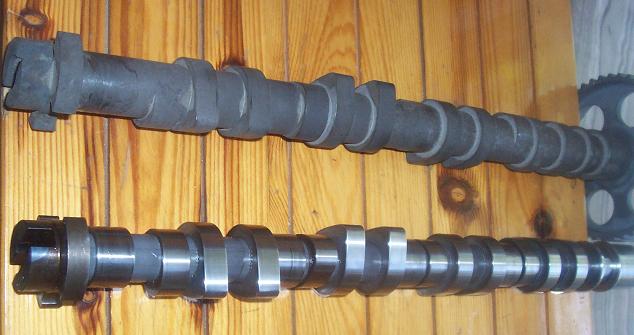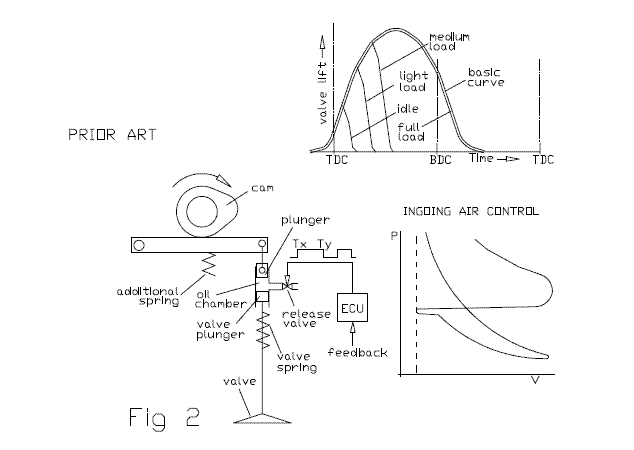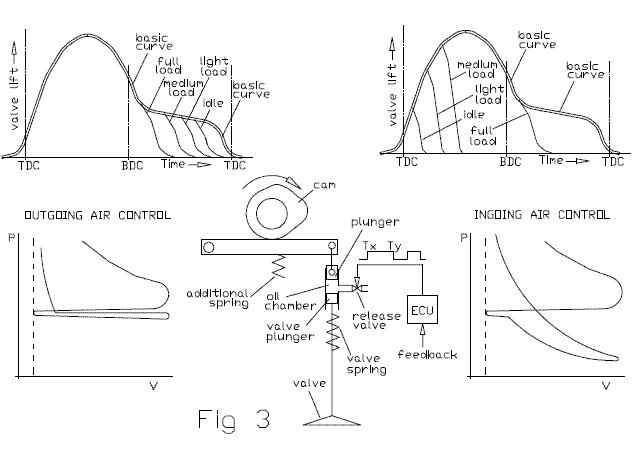manousos wrote:TheRevva wrote:What's stopping them using another such solenoid on a pressurised fluid supply to OPEN the valve too?
It is more easy than this. You don't need a second solenoid electromagnetic valve. Take a look at the
HyDesm (Hydraulic Desmodromic) at
http://www.pattakon.com/pattakonHyDesmo.htm
EXTREMELY interesting thanks Manousos... I'm learning a LOT!
In my (perhaps overly simplistic?) mind, I still see it as being more complex than it NEEDS to be.
There's still a camshaft-like device with the sole purpose of running a localised 'hydraulic pump' at each valve (via the eccentric shaft).
Current ICEs traditionally have some form of oil pump (mostly driven from a cam gear in my experience) for the traditional lubrication needs.
Why can't this be a simple electric pump instead? (And if desired, it could be a two compartment pump with one compartment dedicated to a valve train hydraulic supply).
We already have an ECU, so suitable 'safeties' can be incorporated to 'kill spark and fuel' if output pressure drops too low.
If you had a suitably reliable solenoid such as that described in the HyDesmo system, it could completely control both valve opening AND valve closing.
The solenoid would have a reasonable return spring that would 'default' to pushing the valve closed as a safety precaution (to protect an 'interference' engine from self destruction if a solenoid failed)
Additionally, a weaker than normal valve spring might be used (which would pull the valve closed in a more traditional sense).
The 'modulation' of the solenoid is under direct control of the ECU thereby allowing INFINITE valve timing control. (And yes, this would also therefore allow dynamic 2-stroke / 4-stroke switching).
Like the HyDesmo system, the valve closing can be regulated with 'hydraulic braking' by progressively closing vent ports in the opening oil chamber.
Assuming the above:
- If the oil pump were to fail, the valve springs would maintain the valves closed (And the ECU might even disallow the starter to energise until sufficient pressure is available?)
- If a solenoid coil went 'open circuit', the associated solenoid return spring would make sure the valve stays closed.
- There is a definite ISSUE if a solenoid 'sticks' in the open position, or if it's directed to open the valve at the wrong time.
Systemic requirements:
A decent source of hydraulic pressure (which could easily be routed through a dedicated valve train oil gallery in the head)
A single solenoid (operating akin to a SPDT hydraulic switch) per valve
A fairly large / complex amount of code in the ECU <Grins>
And finally...
When a modern 'green' engine deactivates a cylinder, it's logical to simply leave the intake valve closed. (Obviously, any associated injector would be inoperative on a shutdown cylinder)
However, my 'opinion' is that the exhaust valve should be held OPEN for a significant angle of crank rotation. It should only be closed to alleviate interference issues nears TDC piston travel.
(While it's not essential, the additional 'breathing' of an inoperative cylinder might help to limit associated losses, and our Cray XMP ECU can surely handle it?).
The potential downside of this is that it might cause 'thermal issues' on that 'shutdown' cylinder. It depends upon the temperature of the 'intake charge' that it would suck in through the exhaust valve. Normally, this would consist of the exhaust gasses of a nearby cylinder and, with careful 'tuning' of the exhaust manifold, it could probably maintain the cylinder at a 'normal' temperature?
Heck, our Cray ECU could even monitor the temp of the cylinder liners and 'adjust' the exhaust / inlet valves in order to maintain a suitable temperature?
Perhaps the Cray ECU is mild overkill, but I'd have reservations of this being achievable with the FreeEMS CPU on something like a V8. Perhaps dedicating an MC9S12XDP512 to each cylinder and a 'supervisory' CPU sitting above?
(I would NOT like to be the one having to maintain THAT code!!! <Grins>)




